Cheadle Town 2-0 Cammell Laird 1907- 2022/23 Matchday Blog #44
Joe Marshall- @AllSportJoe
For some people it’s the first song of the birds, for others it’s the cherry blossom cascading from the trees. Some people may feel it through the lighter evenings, and some hear it upon the sound of the first buzz of the bees. The dawn of spring, emerging from the end of a bitter winter, can manifest itself in dozens of ways, depending on your perspective. But what about the perspective of a football fan? Maybe at elite level, watching the white ball appearing from its hibernation, or the gloves and snoods no longer adorning the hands and necks of the Premier League’s unaccustomed stars are signs that the seasons are changing. At non-league level, and from my point of view, spring is truly on its way when floodlights are surplus to requirements for a Saturday, 3pm football match, and this is exactly what happened for the first time in 2023 for me, as I headed to Park Road in Cheadle, home of Cheadle Town FC.

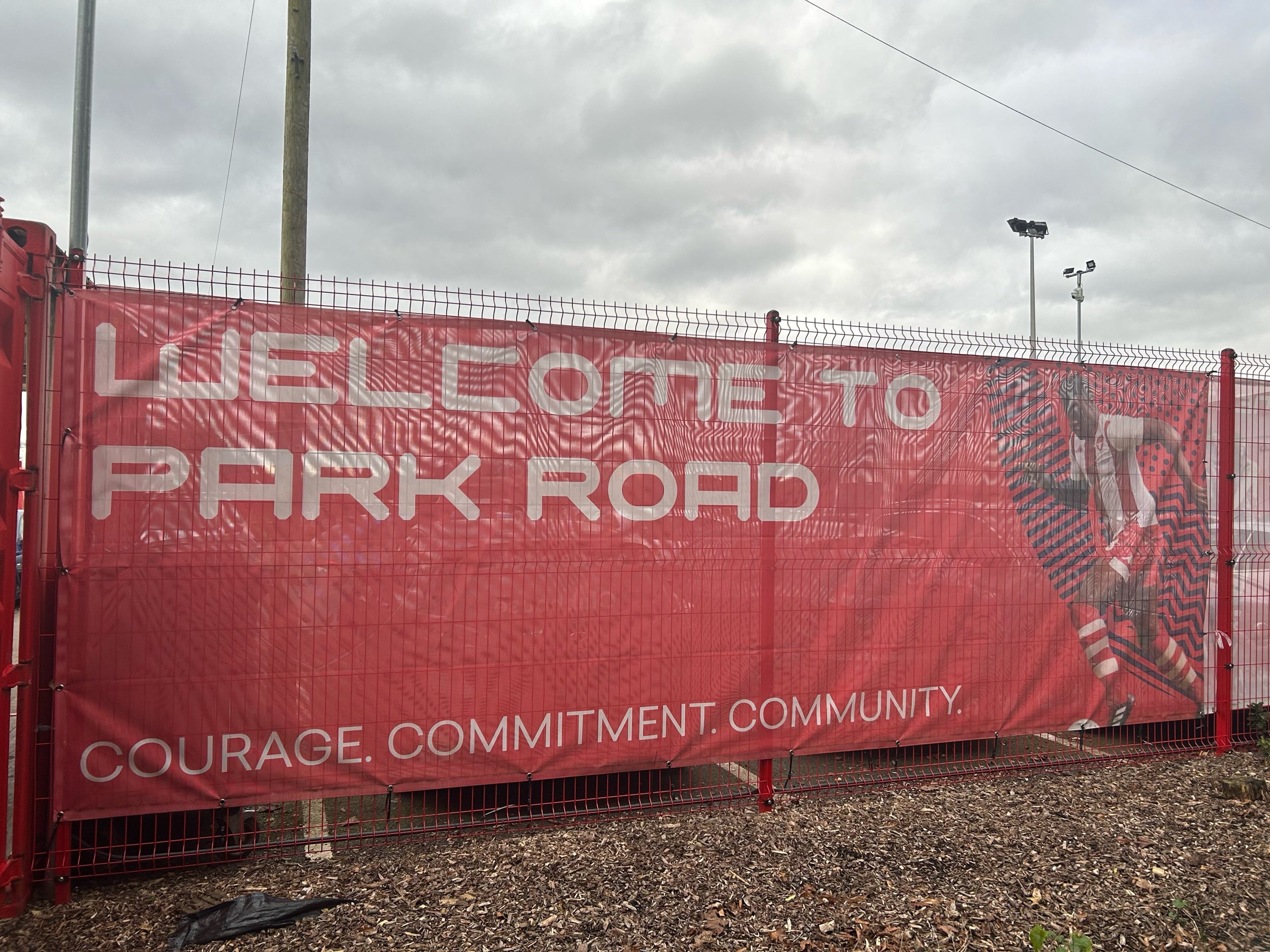
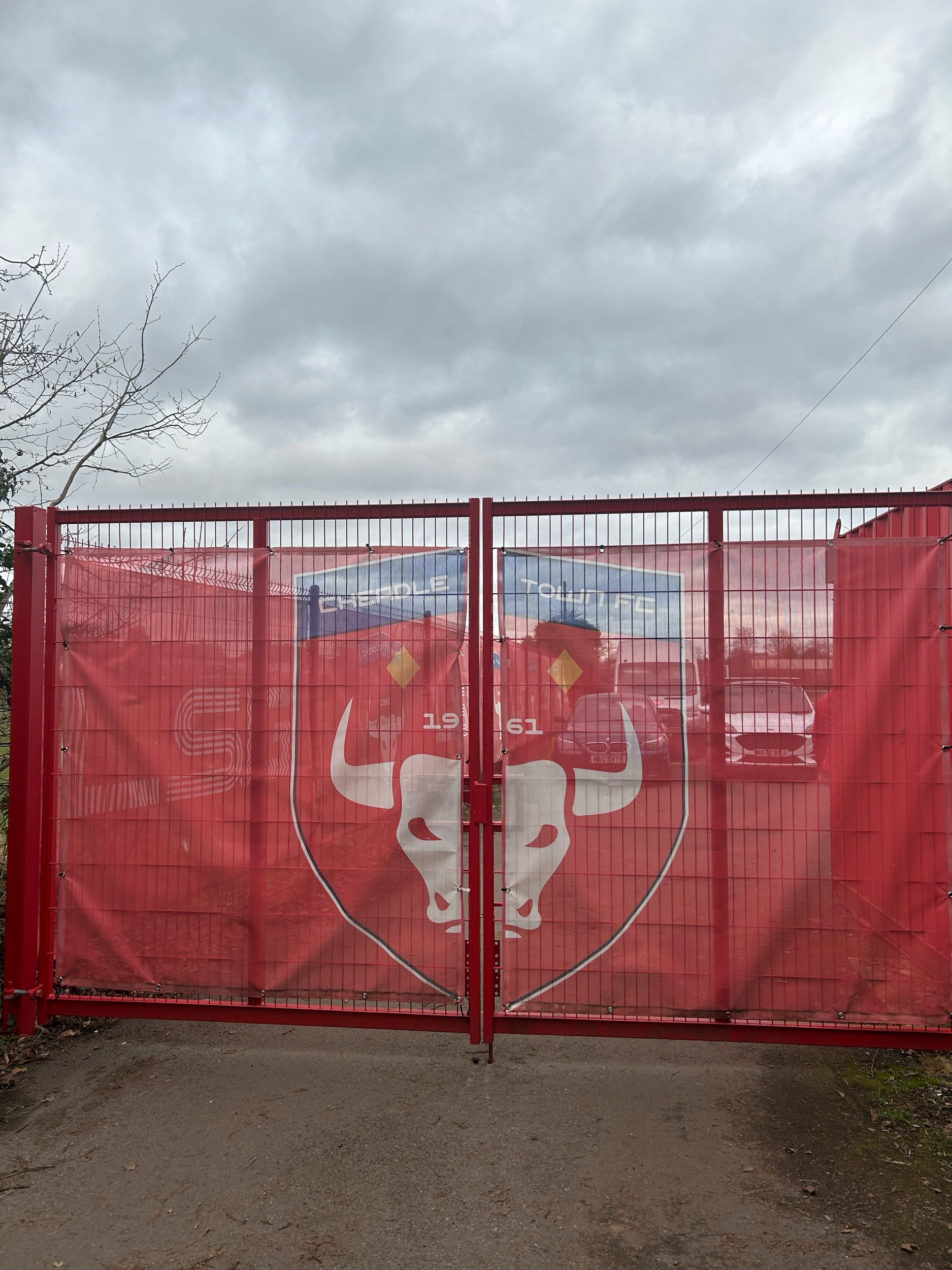
The match remaining naturally illuminated wasn’t the only reason I was looking forward to this game. In fact, heading to Park Road meant that I was able to tick off another North West Counties Football League ground (although I’m still not much closer to ‘completing’ it). The match in question was a league tie against Birkenhead-based Cammell Laird 1907; who sat 16th in the NWCFL Division One South before the game, very much embroiled in a relegation scrap. The hosts meanwhile, went into the game in the playoff spots.
Cheadle itself is a village located in the Stockport borough of Greater Manchester. With a population of around 6,000, it is relatively smaller than neighbouring Cheadle Heath, Cheadle Hulme, and Didsbury. The area is fairly accessible via public transport. Despite not having a railway station of its own, it can be served by nearby Cheadle Hulme, Gatley and East Didsbury stations.
Park Road
Park Road is as unassuming as non-league grounds come, but once you scratch the surface, you begin to uncover a fascinating history, surely being in contention for the record of the smallest football ground with its own Wikipedia page!
It was built in the 1950s, (a few years before the foundation of the club that has gone on to become Cheadle Town) with the initial purpose being as a training facility for Manchester City. Given the time period, it is likely that City icons such as Bert Trautmann and Alan Oakes stepped out onto the Park Road turf plenty of times. However, the legendary names don’t end there, as the ground was also used as the training ground for Portugal during the 1966 World Cup, meaning that the likes of Eusebio and Mario Coluna also graced the pitch. If that wasn’t enough, Park Road was also the home of a 1993 Soccer School, hosted by the great Jairzinho!
Despite being steeped in such history, Park Lane in 2023, remains relatively tucked away, possibly why it was a suitable base for training, away from prying eyes, even in the days when Marcelo Bielsa was still a small boy in Rosario. The turnstile can finally be found at the very end of Park Road itself, a relatively narrow road that I used for parking.
Once inside, the ground’s most striking feature of the is the central, 100-seater main stand, which rises high above everything else that surrounds the pitch. This stand is fantastic, with a little area at the top, which, although I didn’t explore on this particular visit, looked like a small standing terrace. The mixture of seating and terracing in one stand is something I have rarely seen on my footballing travels, and I thought it was an extremely intelligent way to please as many punters as possible.
The rest of the ground consists of traditional railings that cover the perimeter of the pitch, only stopping for the dugouts at the foot of the main stand. The only drawback to the railings is that they were an inconsistent mixture of round and flat, meaning there isn’t always adequate space to balance your bovril! This outer perimeter, coupled with the main stand, gives Park Road a healthy capacity of 2000, with the highest ever attendance at the ground an impressive 1700 for a friendly against neighbours Stockport County in 1994.
Another quirk of visiting Cheadle Town is that the ground is only around 5 miles north of Manchester Airport, meaning low-flying planes were a common occurrence throughout the game. Avid plan spotters will adore visiting Park Road, although it did leave me craving a holiday!
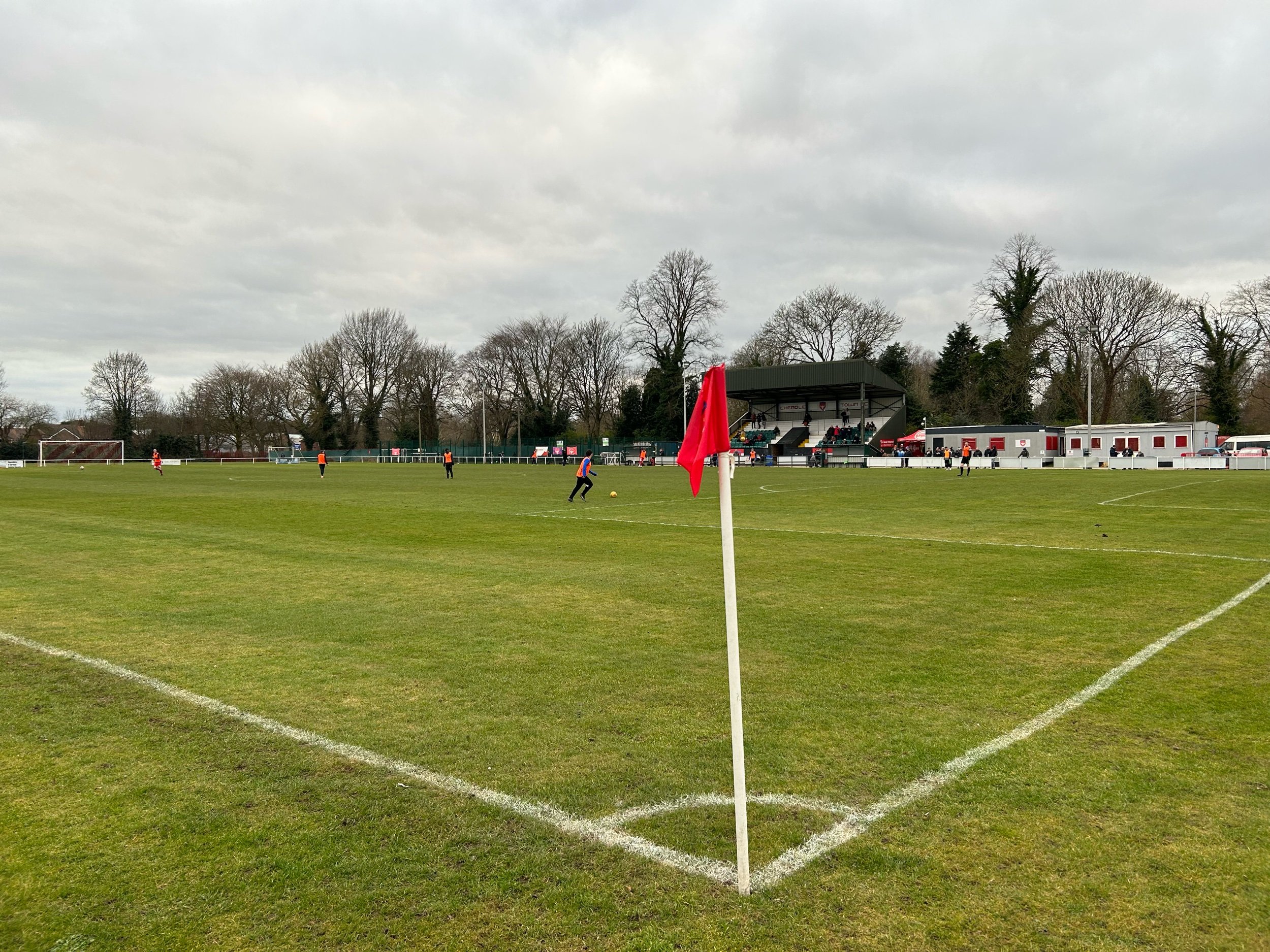
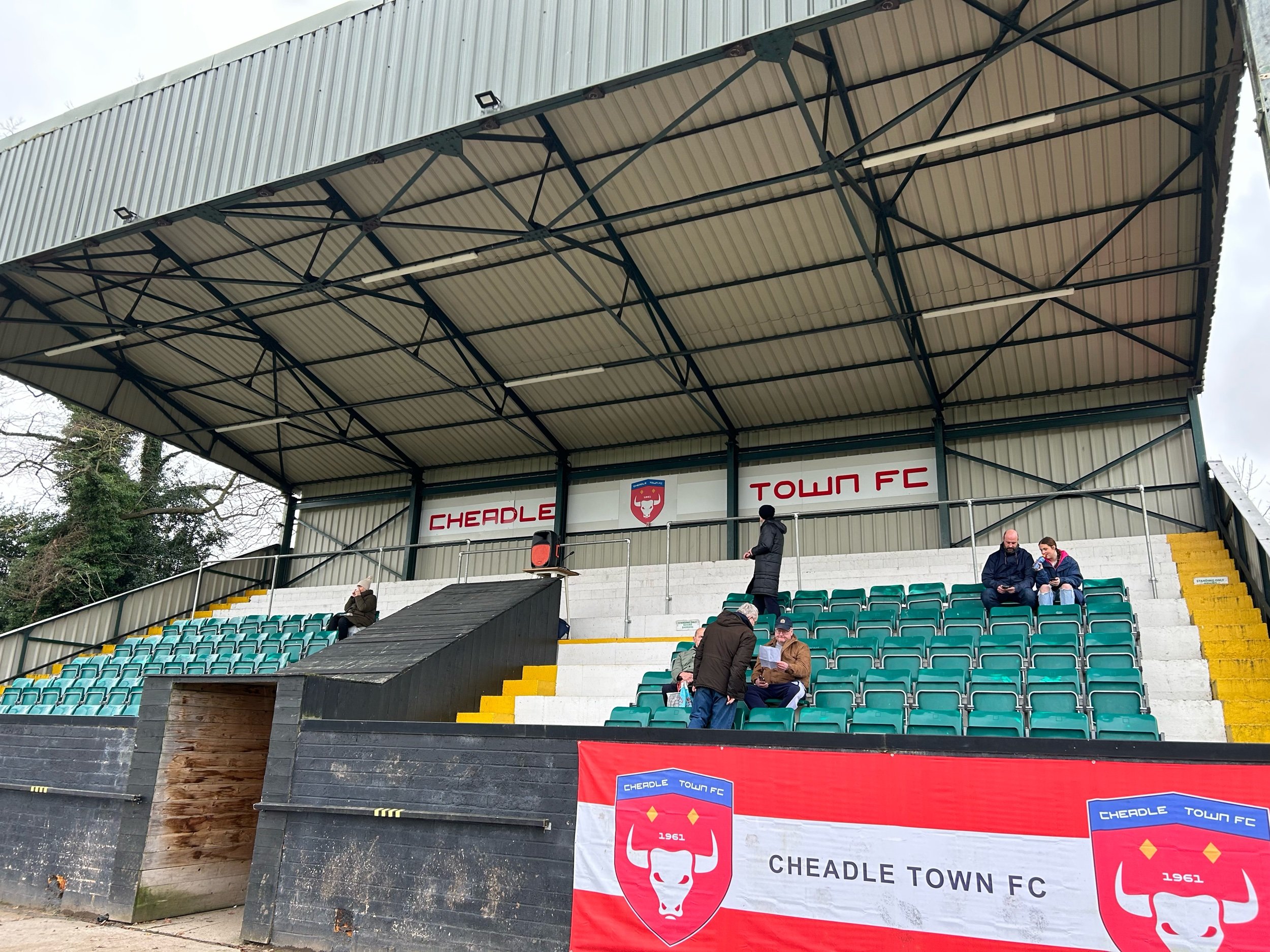

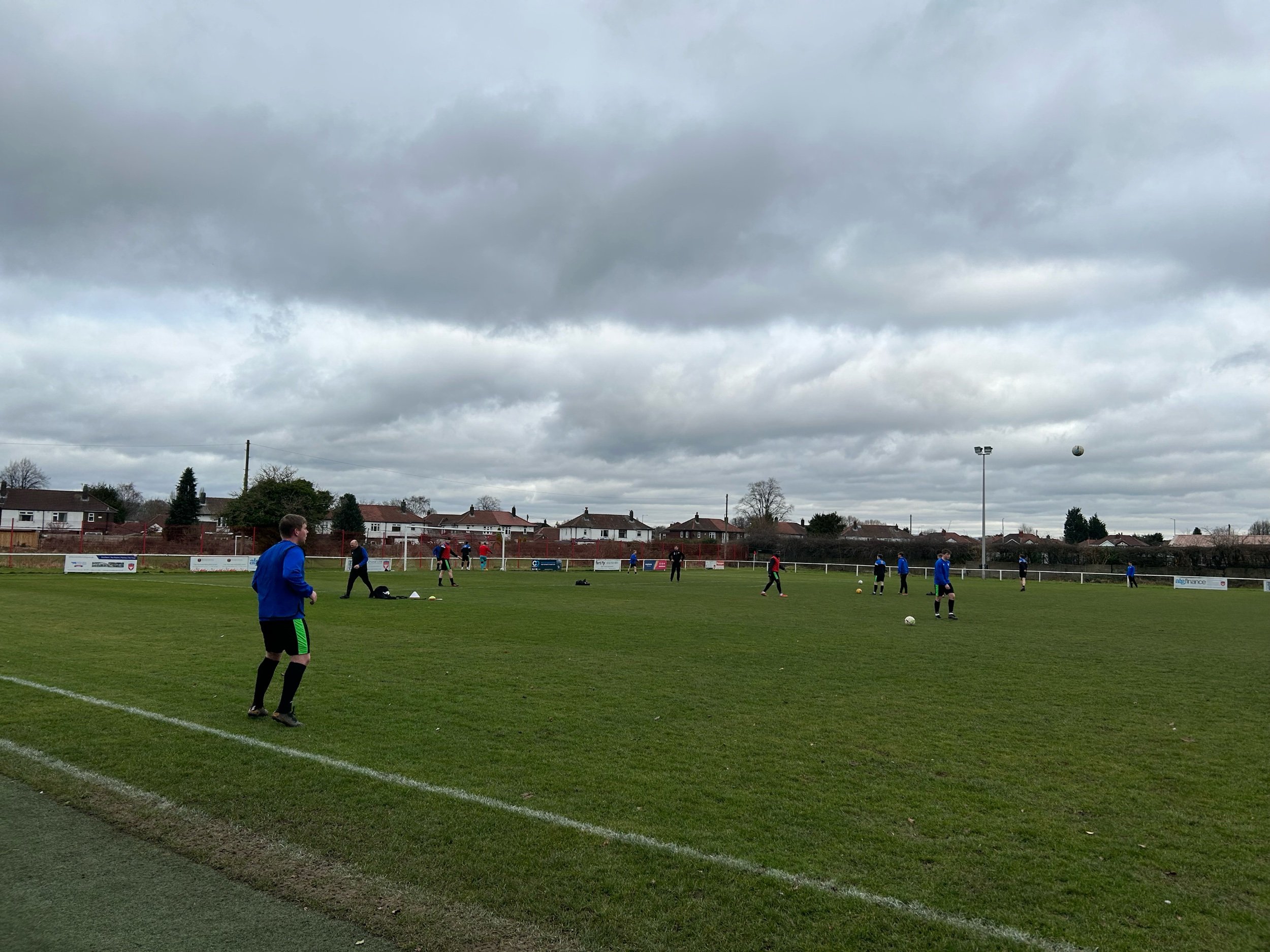
The Park Road Experience
Admission for the NWCFL Division One South was £6, and I parted with an extra £2 at the turnstiles for this excellent programme. Despite only being 20 pages long, the item contains in-depth histories of both teams, as well as plenty of statistics from the season so far.
There is also a great selection of food and drink, with alcoholic beverages served both inside the clubhouse and at the outdoor ‘Town Cafe’. I elected for a meat and potato pie and pint of ale, which fir the life of me, I can no longer recall the name of! All I can remember though, is that it was pretty nice!
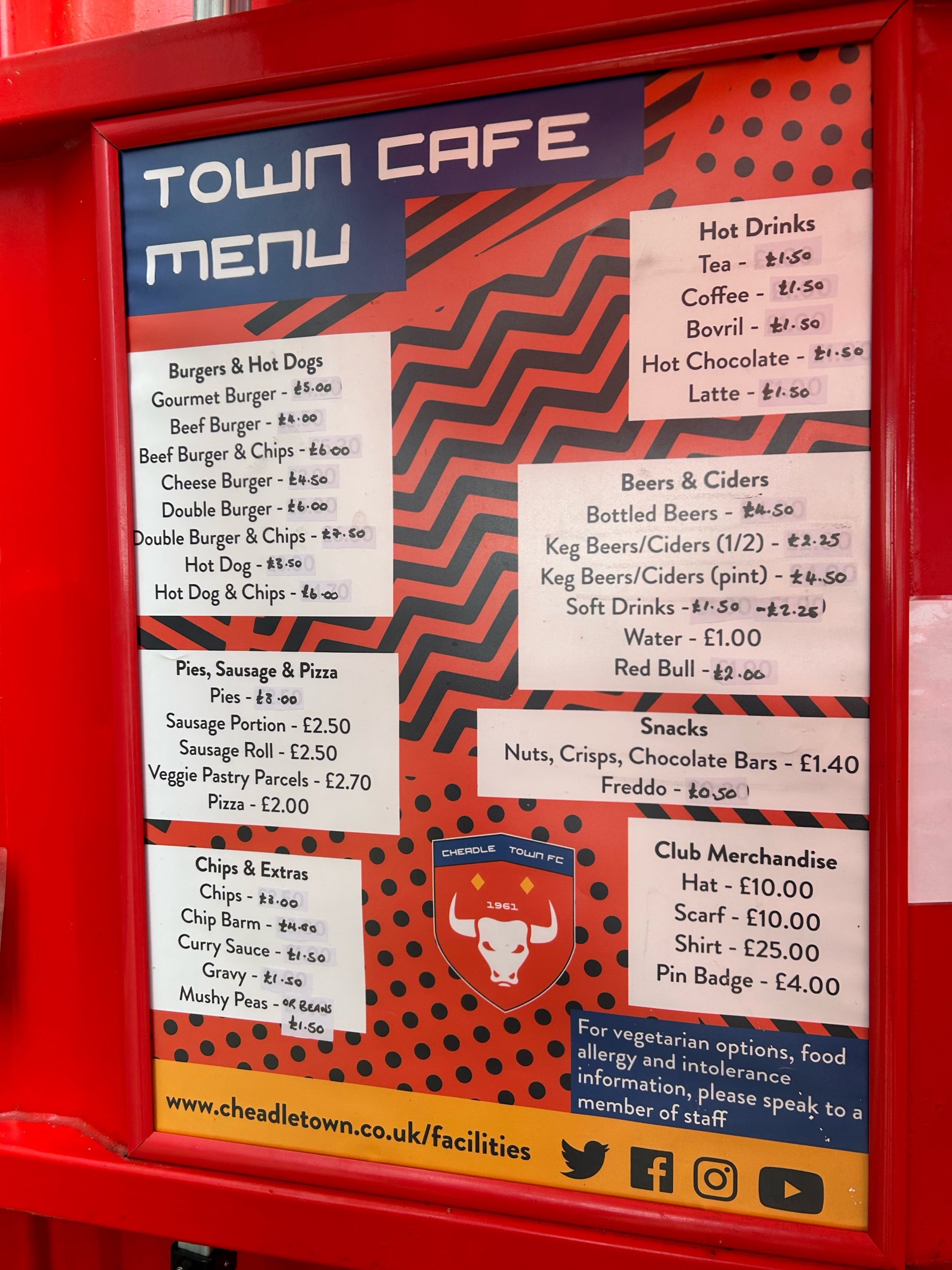

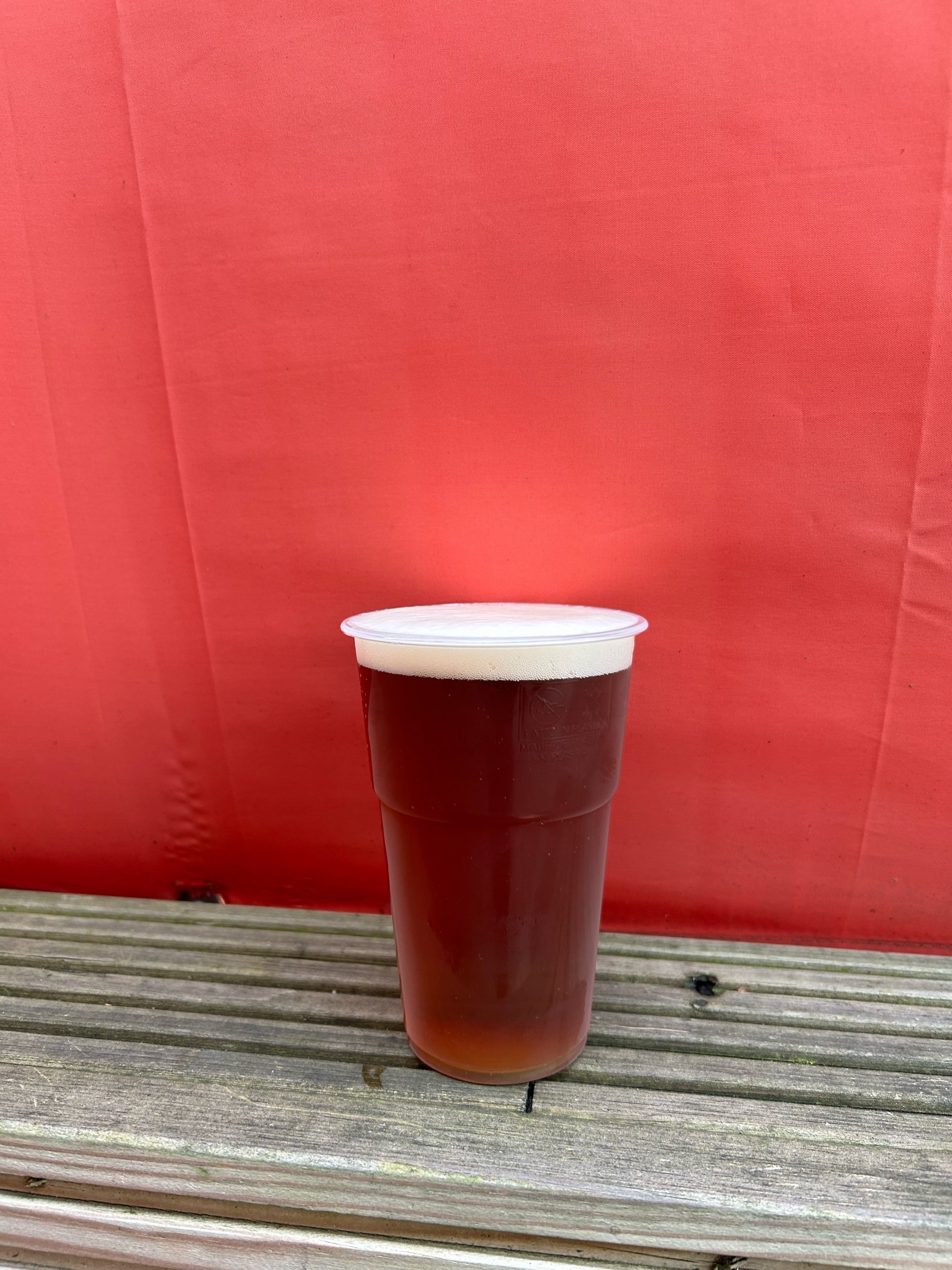
The Teams
Cheadle Town
This match was the second time that I had witnessed Cheadle Town this season, the first being a 2-0 away win over Stockport Georgians, a blog of which you can read here. I made a promise to myself that I would soon visit Park Lane and cover Cheadle in more depth at some point this season, hence why I found myself stationed at Park Road on this particular Saturday.
The reason that I have been keen to visit Park Road and see Cheadle Town at home, is because they too, just like their stadium, have a history that eclipses the size and stature of their position in the footballing landscape.
Formed in 1961 as Grasmere Rovers, they initially competed in Under-16s football in the Manchester & District Sunday League. It wasn’t until 1972 when they moved to Saturday fixtures, and with it, into senior football. They participated in the Manchester League, but played home games at Surrey Street in Glossop, not moving into Park Road until 1982. They were successful under the management of Albert Pike, and in 1979-80, were crowned champions of the Manchester League, Manchester Amateur Cup and the Derbyshire Cup.
The move to Park Road was a momentous occasion for Grasmere Rovers, as they christened their new home with a housewarming friendly against Qatari side Al-Sadd. Playing exotic opposition is something which the club has grown accustomed to over the years, with a fairly impressive list of former opponents hanging proudly in the clubhouse. Being so close to the airport has obviously provided inspiration for them to take part in some extraordinary world tours, taking in some of the globe’s most iconic football stadia along the way, such as the eye-wateringly massive Azteca Stadium in Mexico City and Camp Nou in Barcelona. In total, touring under the name ‘Manchester AFC’, the club has racked up some 210,000 miles and appeared in front of over 312,000 spectators in places such as China, Brazil, Phuket, the Bahamas and Haiti.
In 1983, Grasmere Rovers became Cheadle Town, and they embarked on a fairly consistent, if not overly dramatic stint in the NWCFL Second Division, remaining there until 1996. Domestically, it was a fairly stable existence for a while, especially considering some of the places that the club had travelled to over the course of their history. In 1996, they were promoted, and began a five-year stay the NWCFL First Division, before relegation in 2001. Since then, they have been mainstays at this level, the second tier of North West Counties football.
As a Sheffield Wednesday fan, I have another reason to keep a close eye on proceedings at Park Road, as Cheadle Town boast former Owls goalkeeper Kieren Westwood as a member of their executive board.
This season, Cheadle Town without doubt have their eyes set on a long overdue return to the NWCFL Premier Division. Currently occupying 5th position, they will be hoping to cement a playoff berth, and push for promotion the hard way.
Cammell Laird 1907
As with Cheadle Town, this will be my second Cammell Laird match this season. The first was a game to remember, as they came from three goals down to draw 3-3 with Maine Road back in August. Despite that spirited performance, the day’s visitors were not having the best of seasons, and prior to kick off sat just five points above the relegation zone, but with three more games on the board than 18th place Alsager Town.
The Cammell Laird football team stems from the Cammell Laird shipbuilding company of Birkenhead. As the name would suggest, they were formed in 1907, and played their first ever game in the September of that year, against Tranmere Rovers.
They spent their early years playing in the West Cheshire League, but achieved little success until they moved into the Birkenhead and Wirral League, where they were crowned Division Two champions in 1925. Now competing under the name ‘Kirklands FC’, they remained in the Birkenhead and Wirral league until the outbreak of World War Two, at which point, the team disbanded.
After the war, the club reformed, and re-adopted the Cammell Laird FC name. Initially playing in the Birkenhead and Wirral League again, they soon moved back into the West Cheshire League, and fluctuated between the First and Second Divisions of the competition in the 1950s and 1960s.
Throughout the 70s 80s and 90s, Cammell Laird dominated the West Cheshire League, collecting 19 titles between 1969 and 2002, as well as finishing as runners up on a number of occasions in that time as well.
They made the step up to NWCFL football in 2004 after finishing as runners up in the West Cheshire League, and competed in Division Two of the more prestigious competition. In typical fashion, they won Division Two at the first time of asking, gaining promotion to the Premier Division. Back-to-back promotions were sealed as they finished as champions of the Premier Division in their first season, a campaign which also saw them reach the semi-finals of the FA Vase.
Promotion meant that they were now competing in the Northern Premier League Division One, and only a penalty shootout defeat in the playoffs denied them a third successive promotion. In 2007-08, the league was restructured, and Cammell Laird were shifted into Division One South, and found success instantly, with a promotion to the Premier Division after finishing second. However, after one season at step 7, they were demoted back to Division One due to their ground not meeting grading criteria.
In 2014, the club disbanded, but were swiftly re-established as Cammell Laird 1907. They still play their matches as the same Kirklands Stadium that they first moved into in 1922 and rejoined the football pyramid back in the NWCFL. After a rapid promotion to the Premier Division, they found themselves relegated back to the First Division South in 2017, where they have remained ever since.
The Match
The first half began in a manner that the league table would suggest, Cheadle were dominant and spent a lot of time applying the pressure in the Cammell Laird half. After a few half chances, the hosts had the lead thanks to a cooly converted shot from Liam Myers, after he was teed up by Ryan Usher. There were some vociferous appeals from several Cammell Laird players, who believed that a foul had taken place in midfield in the build up to the goal, but referee Ben Cotton was unmoved and the goal stood.
The visitors picked up the tempo a little after their 14th minute setback, however their tactics were fairly one-dimensional. Long balls forward into their hard working forward players appeared to be their main source of attacking threat. Cheadle marshalled them well however, and Cammell Laird were reduced to a couple of corner kicks which led to nothing.
The referee blew for half time with the home side a goal to the good. They certainly merited their lead in terms of control of the game, but fashioned very few clear cut opportunities after their opener.
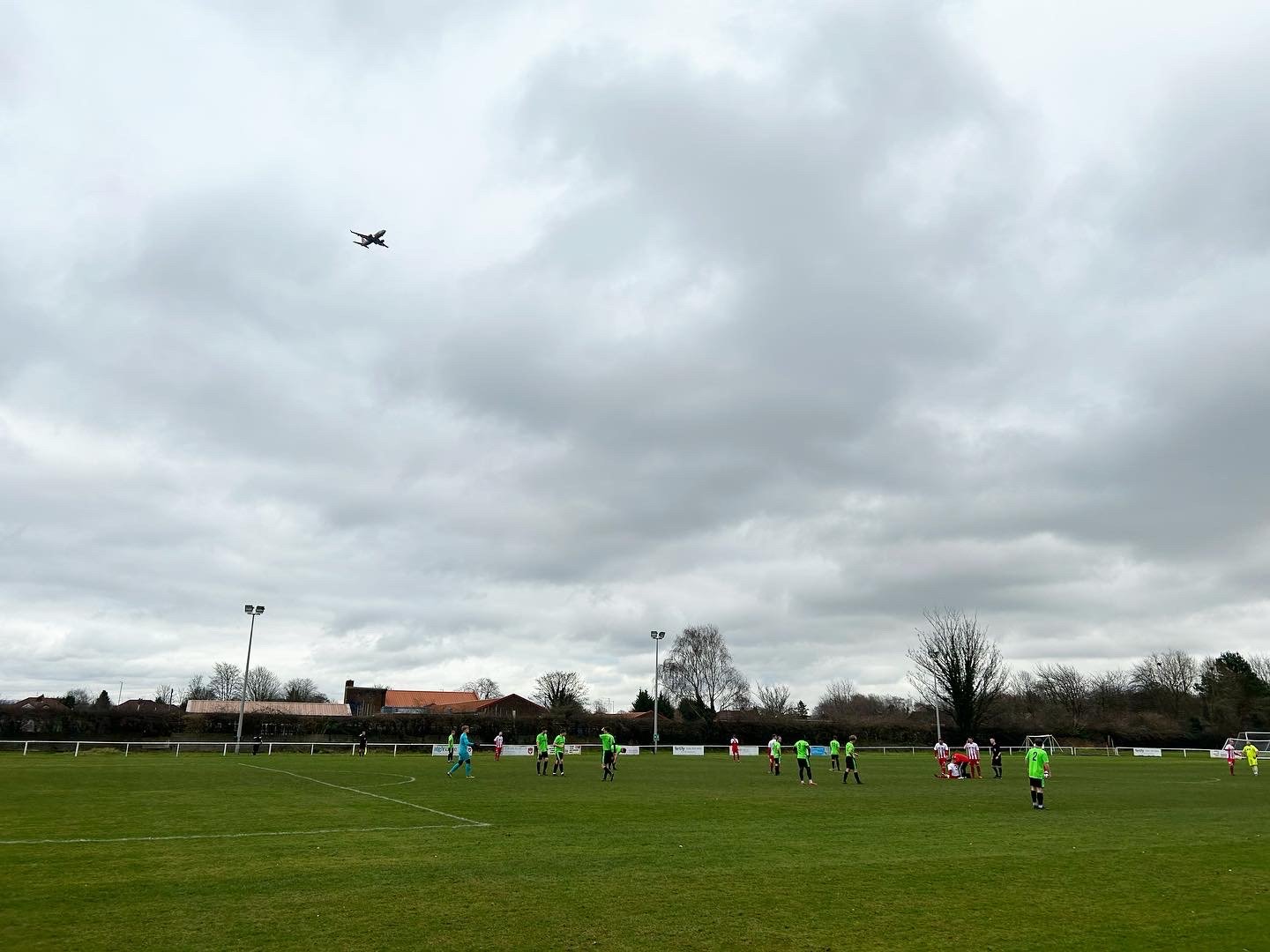
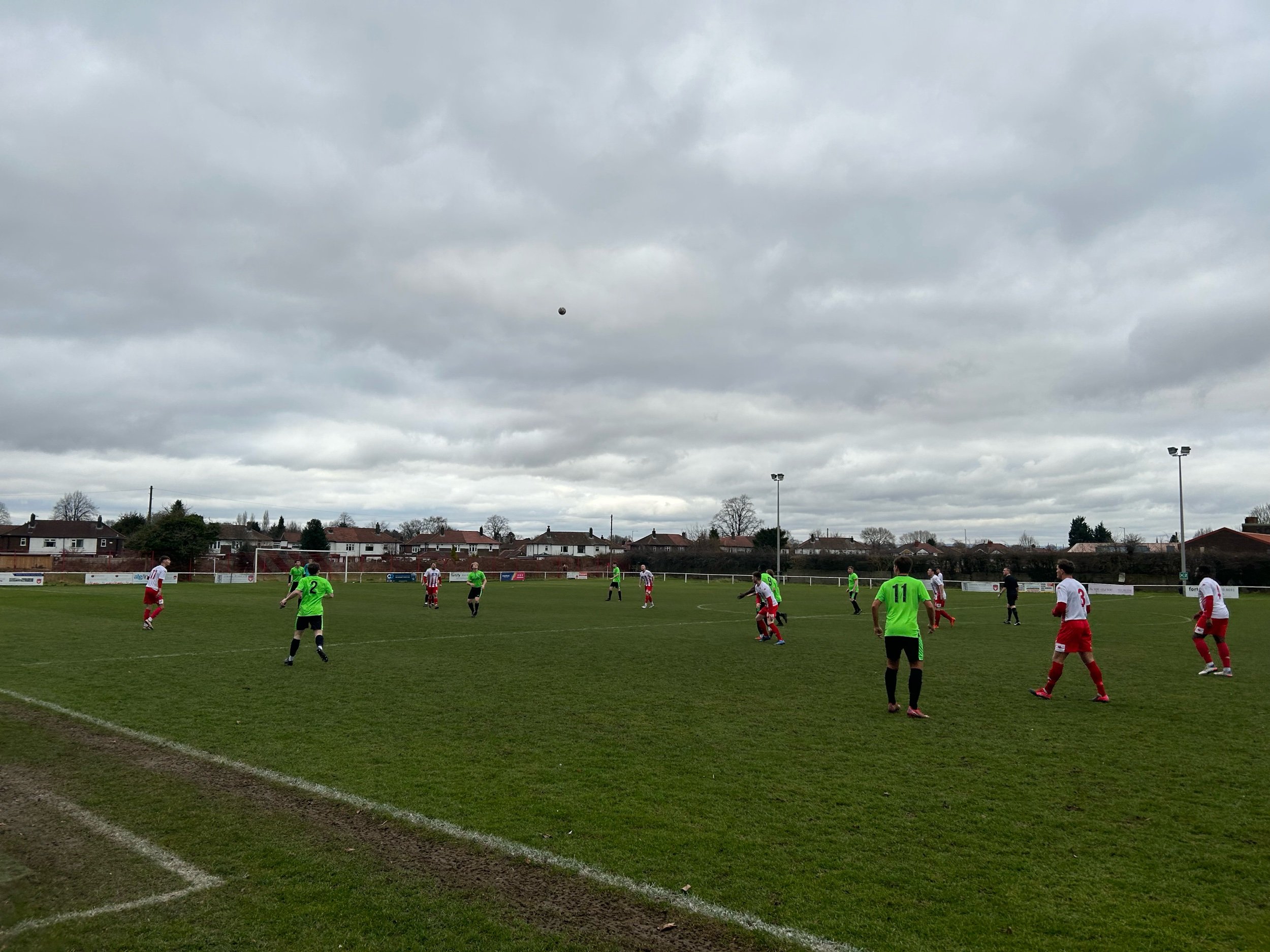
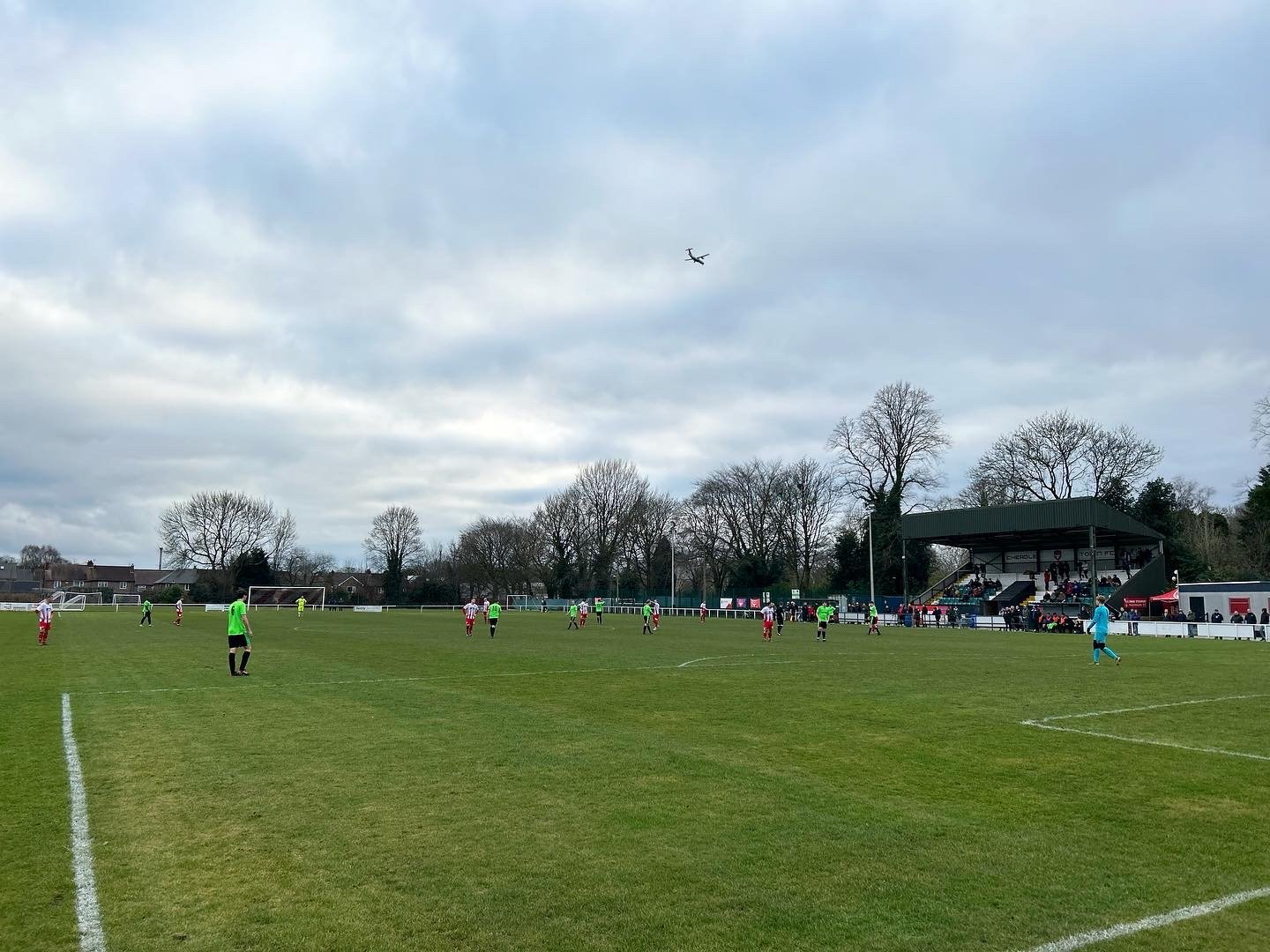
Cheadle came out of the blocks quickly in the second half. Manager Paul Marshall clearly had passed on instructions to take the game to their theoretically weaker opposition and kill the game off. Within a couple of minutes of the restart, Cheadle did indeed double their lead, when Kaleb Parkinson, the lively winger who had been Cheadle’s most exciting player in the first half, beat a couple of players and fired an accurate strike into the bottom corner from the edge of the box.
As planes continued to fly overhead, a beautiful diagonal ball flew from defence to attack, however the resulting chance could not be converted to really cement Cheadle’s advantage. They looked like the team with the momentum, so something had to be done. Cammell Laird attempted to disrupt their flow with a few niggly challenges and a moment of madness when one of their players went down after an apparent clash of heads, which really riled the Cheadle bench. Once the performative melee subsided, play continued with the customary booking apiece, and it remained to be seen if this drama had turned the tide of the contest.
In the final 20 minutes, the game became a little more open, and Cammell Laird fashioned a few chances of their own. Firstly, Jordan Latham had to be alert to prevent them pulling a goal back with a good save, before they somehow managed to hit the post from inexplicably close range. For Cheadle, Patrick Davin was introduced late on, and he too had a golden chance, which he blazed over the bar, causing himself a considerable amount of pain as he did so.

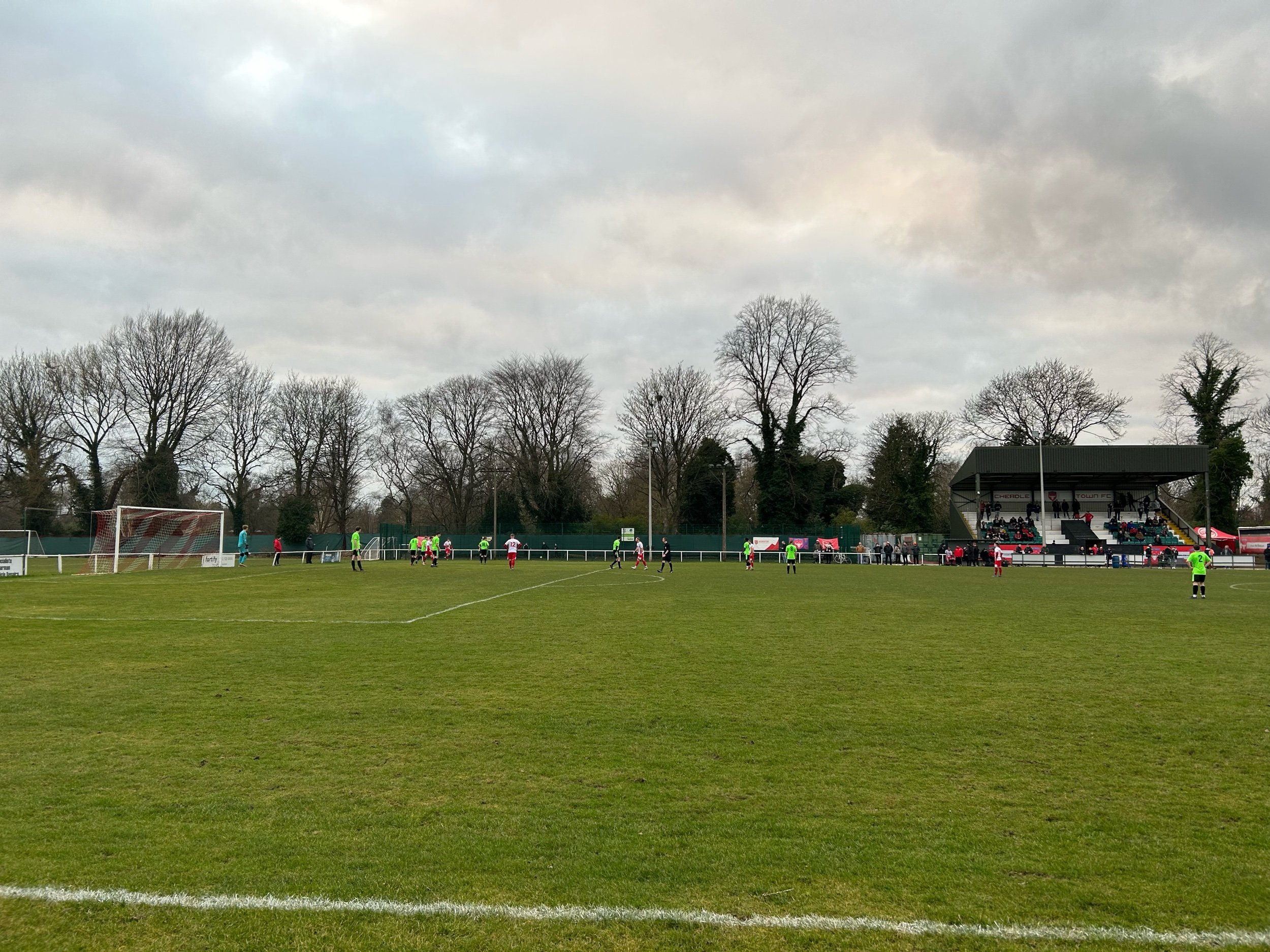
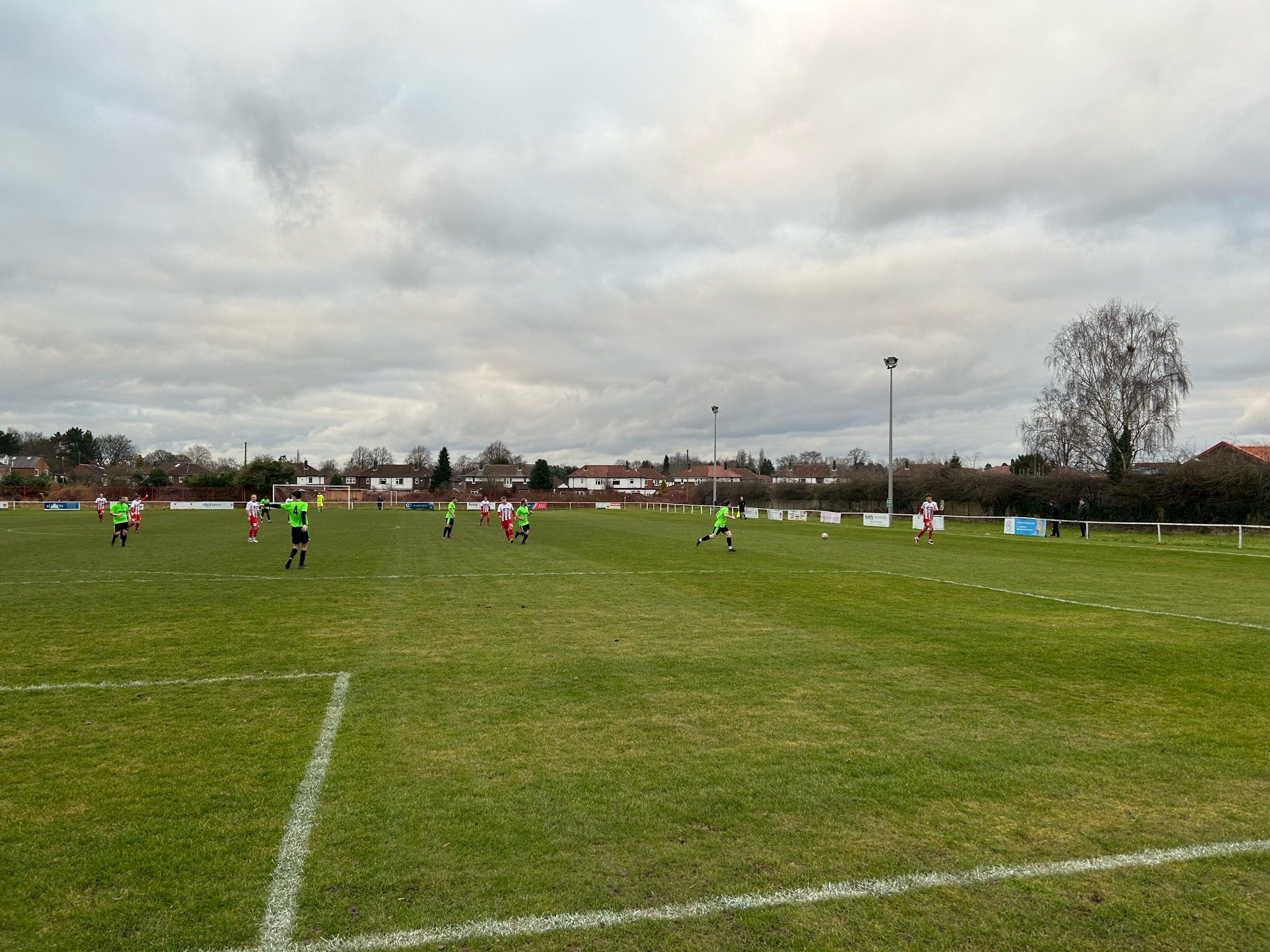
The match ended in a comfortable looking 2-0 win for the hosts. The scoreline was a fair reflection of a game which was hotly contested, but lacking in quality in the final third. Cheadle appeared to do the bare minimum required to win the game, and Cammell Laird waited until far too late into the match before clicking into gear.
I really enjoyed my debut visit to Park Lane, and although at first it may appear small, humble and unassuming, there is a real history to the place that is impossible to ignore. It has everything that you need for an enjoyable day out at a non-league football game, and if you are ever in the area, I would highly recommend a visit. What’s more, the proximity to Manchester Airport is another string to Park Lane’s bow, meaning football fans and plane spotters alike, could easily have a top day out.
Final score: Cheadle Town 2-0 Cammell Laird 1907
Attendance: 99
Admission: £6
Programme: £2






